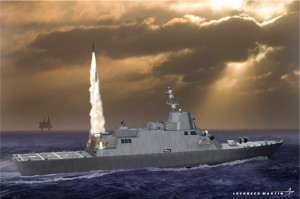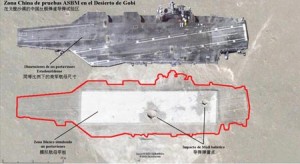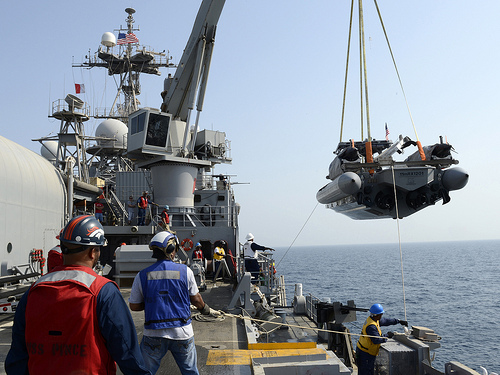The American people have grown accustomed to the status of its military as the strongest force the world has ever known, and despite recent budget cuts, that the United States Navy (USN) remains the finest Navy ever put to sea. The people also expect that in every battle our forces will not just prevail, but sustain minimal losses. The military exhibits this culture as well, focusing on the protection of it personnel with programs ranging from anti-ballistic missile technology to sexual assault prevention training.

This shift in public expectations, that ships should prevail in all environments against all enemies, has forced requirements for surface vessels to continually expand. When it became clear that this cannot be accomplished on a single small vessel, modularity, as expressed by ADM Greenert’s “Payloads over Platforms” article, came to the fore. However, it is time that the USN gives up attempts to build naval vessels that are jacks-of-all-trades and masters-of-none.
This article is not a discussion of this cultural shift, but rather a discussion of how this shift has impacted USN’s ability to build appropriate vessels for the major threats at hand and an attempt to balance this culture with the needs of the American people with respect to the Navy.
Sun Tzu tells us that “those skilled in war bring the enemy to the field of battle and are not brought there by him.” We say that 90% of the world’s trade travels by sea, so a major strategy of the USN ought to be the protection of friendly shipping; and any foe worth their salt will bring the fight to our shipping lanes. The proliferation of diesel and Air-Independent Propulsion (AIP) submarines has placed a dangerous tool in the hand of these potential foes. If we are going to bring the enemy to the field of battle, our ability to destroy enemy submarines must be offensive.
It is not intelligent to expect that destroyers which are already tasked with air defense, land attack, and surface warfare will also be able to proficiently conduct Anti-Submarine Warfare (ASW). This is not because the venerable Arleigh Burke class or its crews are incapable, but rather because they will be stretched thin by so many requirements. War is simply not the time to figure out how to properly conduct ASW http://www.ibiblio.org/hyperwar/USN/rep/ASW-51/. What is truly needed is a dedicated undersea warfare dominance vessel with a secondary focus on the ability to perform long, forward deployed patrols and protect itself from surface and air attack.
Anyone with an interest in naval affairs will find the blogosphere and professional forums full of anti- Littoral Combat Ship (LCS) rhetoric with discussion ranging from the need to “up-gun” LCS to calls to scrap the program completely. The USN hoped LCS could dominate small-boat swarms, mines, and enemy submarines in the littorals. Despite what many will find on the blogosphere, LCS can and will be used as effectively as it can be by fantastic crews, it can and will be used to a positive effect in future wars. But in this business, “positive effect” is not enough, the American people demand domination and frankly, LCS doesn’t deliver.
A new ASW vessel cannot just be thrown together with existing technology and current business practices. As much as I talk about creating a dedicated ASW vessel, it must retain some other capabilities: it should be able to patrol waters distant from American ports, it should be able to protect itself from limited air attack, it should be affordable and easy to maintain and it should be able to attack surface threats. These requirements can feed into its primary warfare area, but we need to think long and hard about what is excess and what is actually required without giving into the shift that requires a vessel good at everything. It has been said that the best platform to destroy a submarine is another submarine, but the goal of this program would be to challenge this paradigm.
The advancement of several technologies could make this vessel a world-class submarine-killer. The use of the electric-drive technology from DDG-1000, innovative ways of detecting undersea threats (like new-generation sonars and USV’s), new air-based ASW technologies and even anti-torpedo technology will put the USN in a place to win this undersea battle. Research into the use of bubbles to increase efficiency and reduce noise similar to the Prairie and Masker Systems could provide an added foot up. It should also field current technologies which are proven to be effective like towed array sonars, the Mark 32 SVTT, and a combination of SH-60s and UAV’s.
In order to dominate undersea warfare, the vessel must protect itself from air and sea threats. The small SPY-1K, a single DART-capable 76mm naval gun, quad-packed ESSM or VLA ASROC in an 8 cell tactical length Mark 41 VLS, 4 Harpoon or new ASuW missiles, Block 1B CIWS and several 25 mm and .50 caliber weapons will provide strong protection against a variety of threats ranging from enemy surface combatants to ASCMs and swarms. An effective Combat Information Center near the bridge and using the newest computer systems will provide this vessel to best protect itself from enemy assets trying to interrupt its main function, finding and destroying submarines.
However, there must be a point where the proverbial line in the sand is drawn. This vessel does not provide area air defense, it does not perform land attack missions, and it does not seek out surface combatants. The Navy requires flexible warships which can take the fight to the enemy. It is not a jack of all trades; it destroys enemy submarines.
William Thibault is a Midshipman at Boston University majoring in Mechanical Engineering. The opinions and views expressed in this post are his alone and are presented in his personal capacity. They do not necessarily represent the views of U.S. Department of Defense or the U.S. Navy.






